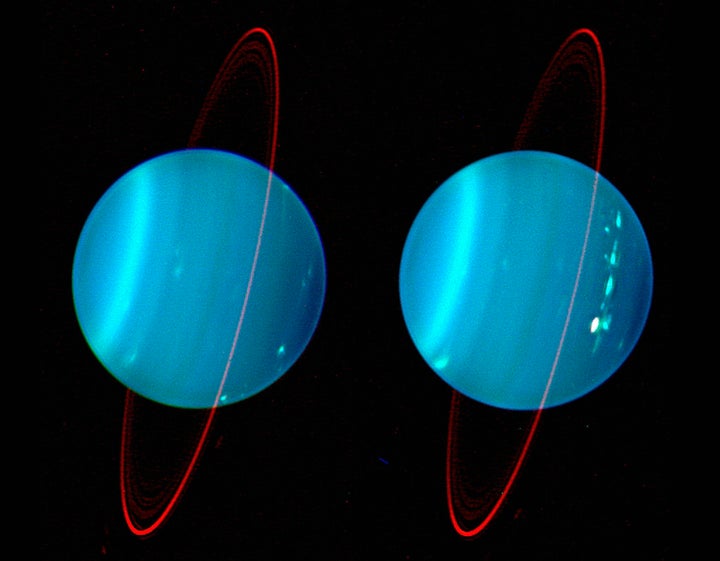
Uranus rarely gets any love.
The typically ignored planet, recently highlighted for orbiting the sun on its side, has just gained itself some atypical attention, according to Universe Today. It seems astronomers have detected that an enormous bright spot may be an unprecedented eruption of methane ice high in the atmosphere.
The "ice giant" tends to not get as much attention as closer planets since it orbits the sun an average distance of 1.8 billion miles. However, this new activity is so intense it has amateur astronomers turning to an often-overlooked part of the solar system.
From SkyMania:
Professional images taken using the 8.1-metre Gemini Telescope North on Hawaii have recorded a region said to be ten times brighter than the planetary background.
The spot also happens to sit at an unusually low latitude, according to The Watchers. Previous bright spots on the planet have been observed much further north.
According to Discovery News, planetary scientist Heidi B. Hammel appealed to others on Facebook to confirm the observations. If enough people are able to confirm the findings, it seems the Hubble Space Telescope may interrupt its current observations to take a closer look at the tilted planet.
The observations are particularly important because they provide unique insight into the planet's weather, which according to SkyMania, is mysterious due to its cold nature.
Uranus is a puzzle to astronomers because it is a cold planet that emits very little energy of its own, unlike Jupiter and Saturn which pump out heat as they contract. There also appears to be no large-scale convection in its atmosphere and the Voyager probes detected little weather as they flew by in the early 1980s.
Uranus's weather patterns are so bizarre that, according to Discovery News, the northern hemisphere sees 42 years of sunlight at a time, while the southern hemisphere plunges into 42 years of darkness.
Earlier this month, a new report shed some light on how Uranus may have obtained its odd position. It seems two giant collisions may have set the planet on its side, titling the planet onto its recognizable axis.